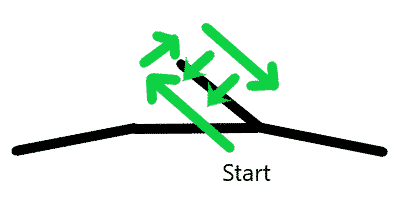

Learning to open a gate while mounted has many uses. Whether you just want to make use of the skill around the farm or need the maneuver for pattern classes, it looks deceptively simple. Here is a step-by-step training guide on how to get your horse to let you open a gate from horseback.
Prerequisites
There are quite a few individual pieces that you need to master before attempting to open a gate from horseback.
- side pass
- yield hindquarters
- yield forequarters
- backup
- softness in poll
- minimal neck reining/steering with legs
Training to Open a Gate
Step 1: The Approach
The first step is simply getting your horse in position at the fence. This is harder than it sounds for most horses. If you are competing in a pattern class you may encounter a simple rope that is straight across. However, if you get into higher levels of competition and encounter a metal gate you may encounter a setup such as depicted in Figure one. This is the most difficult setup to navigate as it boxes your horse in.
As you can see in Figure 1, the ideal position you need to put yourself in to open the gate successfully is right up parallel to the gate. Ideally your leg should almost be touching the fence.
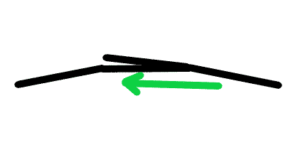
Some horses will just slide right up against the fence so you can walk them in straight. However, most horses won’t. So, you get as close as possible, line yourself up parallel, then side pass in until you are where you need to be against the gate (Figure 2). Practice this part until you can do it effortlessly.
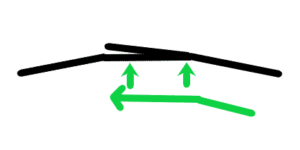
If your horse is scared of being boxed in against the fence, just take it one step at a time. Don’t fight him. Work him on something else until he is nice and ready for a break. Get him as close as you can, then let him relax and reward him. Let him just stand there and think about how nice it is to stand still and catch his breath. If he decides he doesn’t want to stay, that’s fine. Put him back to work. After a little bit, come back and get him a step closer to the fence then let him have another rest. Most horses will catch on pretty quick that fence = rest. It might take a couple days to get him so your leg is right up next to that fence. That’s perfectly fine. Take it at his pace.
Step 2: Touch the Gate
Note, this step is about touching the gate, not opening it. All you should be doing is leaning over and touching the gate. Some horses will find this weird. This is the point where people have the most trouble. You may have to lean over in increments. If your horse shies, try just leaning a little bit at a time. Once he gets used to you leaning a third of the way there then you can lean the next third of the way there. After a few repetitions of that you can lean the rest of the way.
Once your horse is okay with you leaning over to touch the gate, try rattling it a little. Rub your hand on it. Wiggle it. Take as many baby steps as he needs to get comfortable. As soon as he starts getting stressed or nervous, back up a step or two.
Step 3: Open the Gate
Once your horse is okay with the gate rattling, you can graduate to picking up the latch and putting it back down without opening the gate. Once you’ve mastered that, it is time for you to really move the gate by actually opening it. You don’t want to go through it just yet. Just open it and close it again from a standstill. At first do it quietly and carefully. If you feel comfortable you can up the pressure by rattling the gate a bit more and being a bit clumsy about it.
Step 4: Walk Through
Yes, we’re finally getting there. Now, once you open the gate you can actually walk through it. Keep your hand on the rail and walk slowly. When you reach the end of the gate, pivot with your hand on the rail slowly inching your way around the other side until you are parallel to the gate again (Figure 3). At this point, you have two options:
Option 1: Push the gate closed from a standstill. This is for a horse that balks at the idea of side passing into what he perceives to be a solid fence. If you are working with a rope gate just drop the rope. Give him time to master the turn before working on the final side pass.
Option 2: Push your luck and ask for the side pass. Some horses will give it to you if you’ve done your homework. At any time you can abort and go back to option 1.
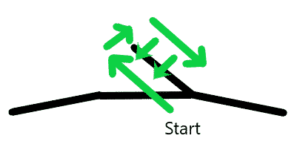
Ideal Practice setups
Here are some ideal practice setups for starting out. Figure 4.B is best for most horses as it forces the horse to maintain the parallel position. However, Figure 4.A helps some horses who feel too claustrophobic by being totally against the fence. Then there is also the rope gate which doesn’t have any fence on either side at all which work for some people and show up at many lower level shows. The big problem with that is that it is easy to pull over if you mess up. Some horses find it less intimidating, but many do not respect the rope which often causes difficulties.
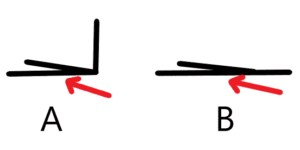
Common Horse Mistakes
1. Swinging the forequarters away
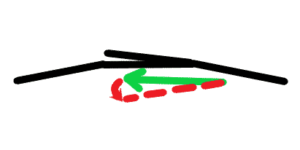
One of the most common mistakes horses make is swinging their forequarters away. This happens when you lean over to grab the latch. Often you end up leaning slightly forward so you hand is up beside their head. This is often startling to a horse and their natural instinct as a prey animal is to shy away. Their head is their most vulnerable area. If they see quick movement out of the corner of their eye, they will naturally flinch away. There are several things you can do to combat this problem:
- Practice reaching forward when you are away from the fence so they don’t feel so trapped.
- Move slowly and smoothly in the beginning so your movements are less predatory and startling.
- Be obvious about what you are doing so your horse knows what’s coming and is prepared for that hand to come up next to him.
2. Swinging the hindquarters away

This is a less common problem because it brings the horse into a direct confrontation to the perceived threat (the gate). It can happen when you are ready for him to move his front end away and, therefore, are blocking his escape. With his flight path cut off, his fight instinct kicks in. He swings his hind end away so he can eye up the threat. He will often attempt to wheel the rest of the way around and wiggle out of the pickle you’ve put him in. Failing that, he will probably shoot backwards and possibly start rearing. This is where things get dangerous. If your horse is truly scared, never corner him. Forward movement is always much safer than staying in one position. But, if you’ve done your homework you shouldn’t get into this situation.
3. Sidestepping away
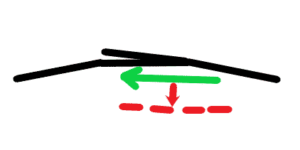
If you successfully cut off his ability to swing out his hindquarters and his forequarters, he may just decide to do a lovely side pass in the opposite direction. Again, take a step backwards. Don’t bind him up or you may find yourself in a rearing or bucking situation. Stay calm and back up a few steps.
4. Refusing altogether
This usually happens after one or more of the above. If he’s completely refusing, go do something else. Come back when he has relaxed again. Start out where he is comfortable even if that’s 20 feet away.
Common Rider Mistakes
1. Pushing Too Fast
Take your time. Prepare your horse by following each little step even if it sounds tedious. Make sure you’ve done all of your homework before hand. Don’t try to teach him to side pass while teaching him to open a gate. One piece at a time.
2. Trying to open the gate from too far away
If you get impatient and try to open the gate from too far away, you will need to lean further which will unbalance you and make your horse more likely to step away. Take your time. Do it right. Yes, that means that tall people can get away with being further away than short people. But, being tall isn’t an excuse for cutting corners. Do your homework. Get as close to the gate as possible.







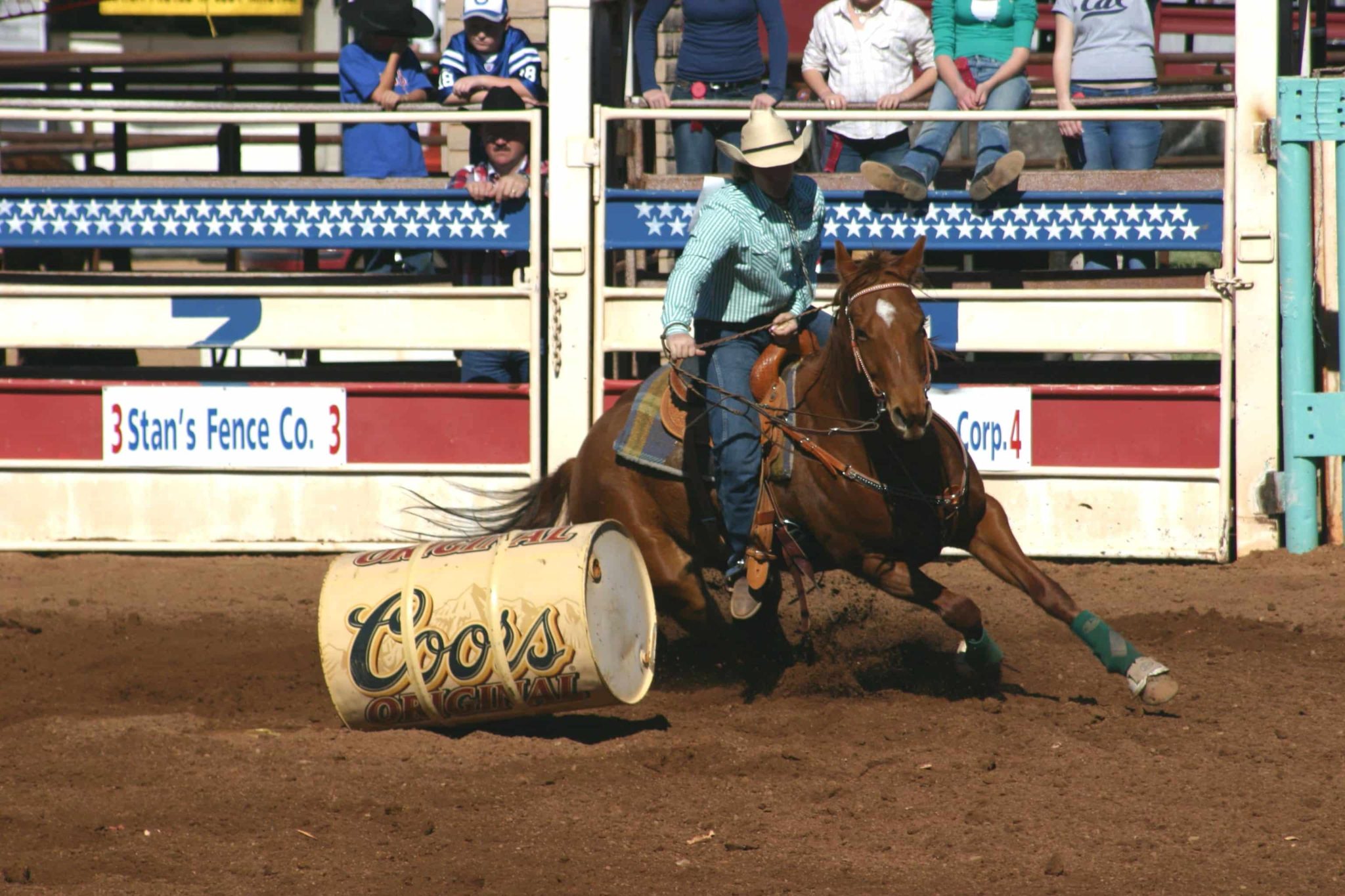
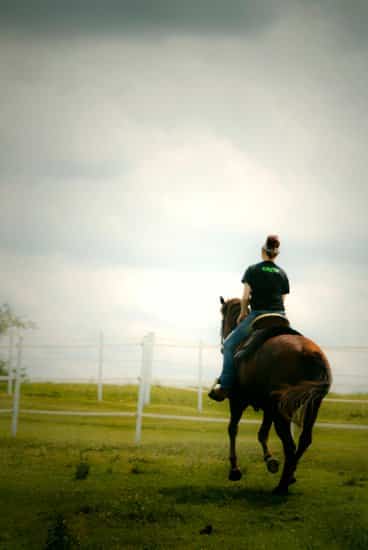

On your pinterest photo, “mounted” is spelled “mouted” in error.
I would pin it if you fix the graphic.
Lol. That’s embarrassing. Thanks for pointing that out. Old graphic. Replaced it with the up to date one.